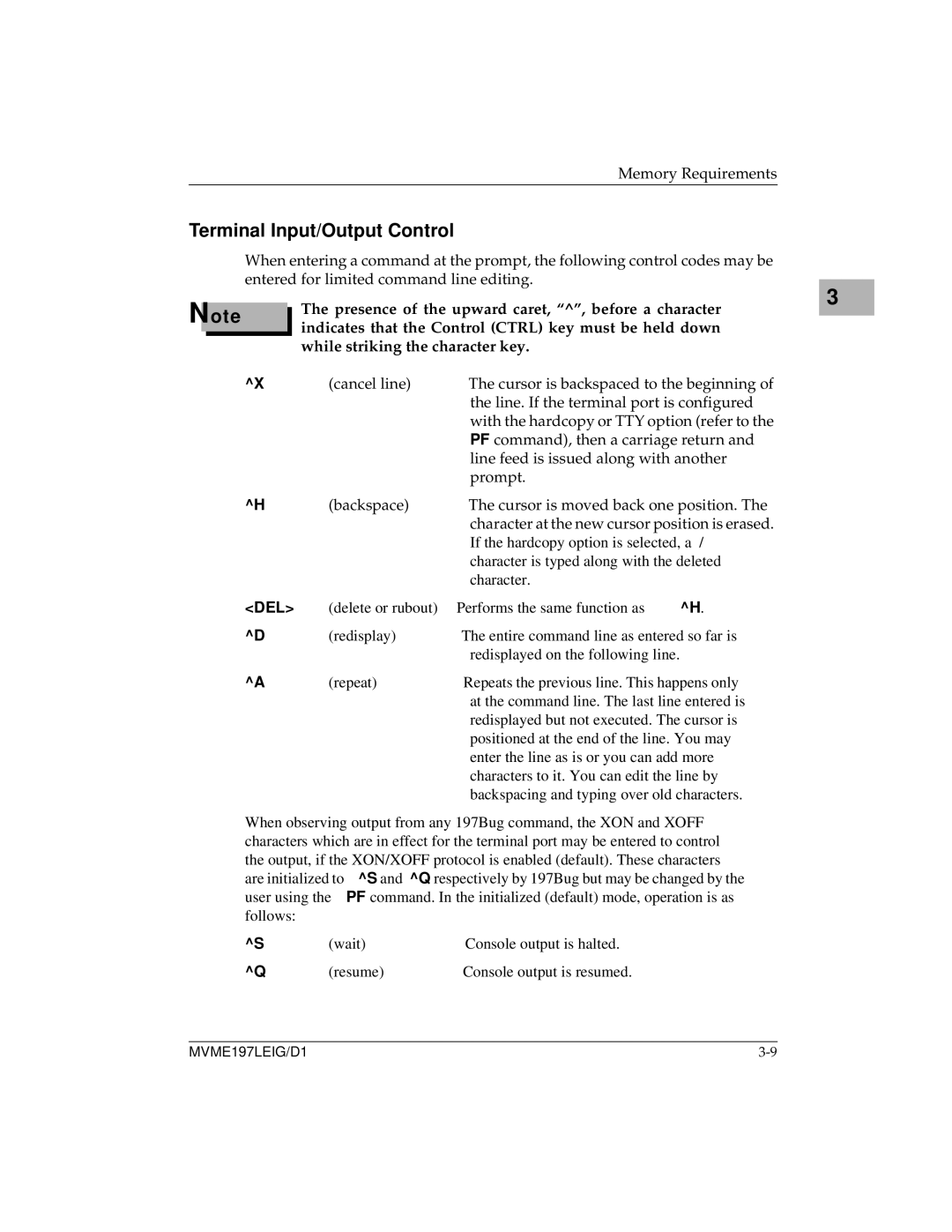
| Memory Requirements |
| |
Terminal Input/Output Control |
| ||
| When entering a command at the prompt, the following control codes may be |
| |
| entered for limited command line editing. | 3 | |
Note | The presence of the upward caret, “^”, before a character | ||
| |||
indicates that the Control (CTRL) key must be held down |
| ||
|
| ||
| while striking the character key. |
| |
^X | (cancel line) | The cursor is backspaced to the beginning of |
|
| the line. If the terminal port is configured |
|
| with the hardcopy or TTY option (refer to the |
|
| PF command), then a carriage return and |
|
| line feed is issued along with another |
|
| prompt. |
^H | (backspace) | The cursor is moved back one position. The |
|
| character at the new cursor position is erased. |
|
| If the hardcopy option is selected, a “/” |
|
| character is typed along with the deleted |
|
| character. |
<DEL> | (delete or rubout) | Performs the same function as ^H. |
^D | (redisplay) | The entire command line as entered so far is |
|
| redisplayed on the following line. |
^A | (repeat) | Repeats the previous line. This happens only |
|
| at the command line. The last line entered is |
|
| redisplayed but not executed. The cursor is |
|
| positioned at the end of the line. You may |
|
| enter the line as is or you can add more |
|
| characters to it. You can edit the line by |
|
| backspacing and typing over old characters. |
When observing output from any 197Bug command, the XON and XOFF characters which are in effect for the terminal port may be entered to control the output, if the XON/XOFF protocol is enabled (default). These characters are initialized to ^S and ^Q respectively by 197Bug but may be changed by the user using the PF command. In the initialized (default) mode, operation is as follows:
^S | (wait) | Console output is halted. |
^Q | (resume) | Console output is resumed. |
MVME197LEIG/D1 |
